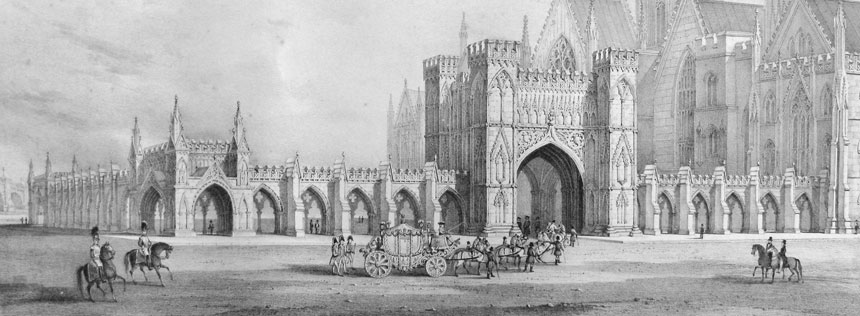
|

|

|  | The Staircase Hall at Leigh Court, Bristol
|
|  | The gothic conservatory at Carton House, London
|
|  | Design for the Nelson Testimonial, 1839
|
Top banner image: Thomas Hopper, 'Entrance to the Royal Quadrangle, New Palace Yard', design for the new
Houses of Parliament
|
|
The name of Thomas Hopper is unfamiliar, despite belonging to one of the most fashionable, prolific, and versatile English architects of the first half of the nineteenth century. Over the course of fifty years his London-based office produced a body of works 'bewildering' in its diversity. In the process, Hopper created many extraordinary buildings and interiors, experimented with striking visual effects, pioneered historical styles, undertook sensitive restorations and modernisations, and single-mindedly pursued his own precepts. Country houses formed his largest practice, from ornamental cottages to monumental castles.
The aim of this study is to recover Thomas Hopper and re-present his 'Architect's business' by drawing on archival sources, his own words, biographical traces, and a representative sample of executed buildings and projected designs, in order to understand the place of visual effect and the visualisation of historical inheritance, within, specifically, his country house practice. In doing so, it also addresses the question of Hopper's own cultural invisibility since the 1850s.
The study includes a number of buildings that have not been researched before. It uses one, North Stoneham House, the study's catalyst, to make a detailed case study, concluding that Stoneham embodied many of the issues that both produce and erase meaning in Hopper's architecture.
|

